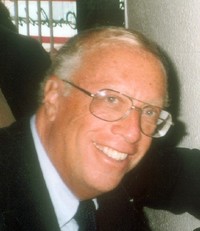By Rabbi Dr. Israel Drazin

BOCA RATON, Florida — The current practice is that Purim is celebrated as a one-day holiday. Cities that were walled at the time of Joshua’s conquest of Israel – most notably Jerusalem – celebrate Purim on the 15th of Adar to recall the end of hostilities in the walled city of Shushan, where the battles occurred Adar 13 and 14. Elsewhere, the holiday is observed on the one day of Adar 14 to recall the cessation of the fight after the war on the thirteenth in all other places of Ahasuerus’s kingdom.
Three-stage development of the holiday
The date of the Purim holiday was developed in three stages. It was first accepted as a holiday on the fourteenth only in the villages, as Esther 9:19 records: “As a result [of the successful defensive battle against the non-Judeans on Adar 13], Judeans of the villages, who dwell in villages, make the fourteenth of Adar a day of happiness, feasting, and a good day, and of sending portions one to another.”
Two things should be noted about verse 19, which details the first stage of the development of the Purim holiday. First, the holiday was celebrated for one day, Adar 14, by villagers who fought non-Judeans on a single day, 13 Adar. Verse 18 states that the Judeans in Shushan battled for two days – both the thirteenth and the fourteenth – “and rested on the fifteenth day and made it a day of feasting and happiness.” But as A. Cohen notes in The Soncino Press “The Five Megilloth” in verse 19, “After this verse we would have expected another verse giving the law of ‘Shushan Purim,’ that those who dwell in walled cities keep the 15th of Adar” as the holiday of Purim. The Babylonian Talmud, Megilla 2b, also notes that the law for the walled cities is absent. Since this is absent, it seems that the first stage of the celebration of Purim was a single day, on Adar 14 for villages and walled cities. Second, this celebration was accompanied by sending gifts to one another. No mention is made of gifts to the poor.
Second stage
The second stage was developed later. Mordecai decreed that Purim should be observed for two days, as indicated in verses 20–22 and 27. Mordecai sent a letter to all Judeans of Ahasuerus’s provinces “to accept upon themselves to keep the 14th of the month of Adar and the fifteenth of it, every year . . . and make them days of feasting and happiness and of sending portions one to another and gifts to the poor.” And the Judeans “took upon themselves . . . that they would keep these two days.”
Again, two things should be noted: (1) Mordecai made Purim into a two-day holiday and requested the people to accept it as such, and they did. (2) He added the practice of sending gifts to the poor.
Josephus, writing after 70 CE, records that Purim was celebrated on Adar 14 and 15 – two days. He states that the people sent gifts to one another. He does not mention gifts to the poor.
Third stage
Still later, for unknown reasons, the practice arose to observe only a single day of Purim. But, cities like Jerusalem that were walled during the days of Joshua celebrated Purim on Adar 15, while all other cities observed it on Adar 14.
Summary
Notes
1. The Hebrew manot, “portions,” does not indicate what the portions were, but the Talmud states it is foodstuff, and since the plural is used, the rabbis decreed it should be at least two foods.
2. The Five Megilloth (Soncino Press, 1952), 238. The Babylonian Talmud, Megilla 2b, also comments that the law for the walled cities is absent.
3. It should be noted that Mordecai did not say to send “portions” but gifts. It is unclear whether
portions and gifts should be understood as synonyms or as two different things.
4. Antiquities 6:13.
5. The issue is discussed in the Babylonian Talmud, Megilla 2b.